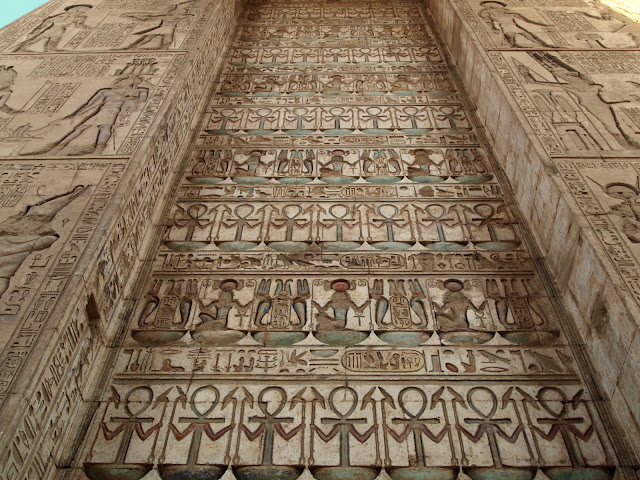Speechless. That's the sensation that overcame me upon my first sight of the Great Pyramids of Giza. Ever since learning about ancient Egyptian civilization in elementary school, some small part of me had skeptically regarded it all as fanciful myth. Perhaps because the grand works of the Pharaohs stirred a part of my imagination normally reserved for interplanetary spaceships, eye-patched pirates on the high seas, and other things I'd read about in books but would never likely experience in real life. But here I was, staring at the last remnant of the world's seven wonders. And the indisputable reality of what I saw left me at a loss for words.
Even more incredible than the sight of the pyramids was the act of venturing inside of one. At the Dahshur necropolis nearby Giza, the Red Pyramid stands as the first true pyramid ever constructed as well as the third largest. It is an unfathomable 4500 years old. I climbed up to an entrance midway up one face of the exterior, then crawled down a claustrophobically narrow passage to a series of musty chambers inside. For several minutes I was completely alone in this ancient vault. The feeling that came over me was simultaneously awe-inspiring and chilling, and one that I will never forget.

 |
| Inside the Red Pyramid, looking up towards it's Apex |
I had based myself in Cairo for the tour of the Pyramids, as Giza is so nearby that it practically qualifies as a suburb of Africa's largest metropolis. But now I was headed five hundred miles to the south, all the way from the north of Egypt to the Sudanese border. What awaited there were the massive temples of Abu Simbel, erected in the 13th century B.C. during the long reign of Ramesses II. The pharaoh clearly was not lacking in self-esteem, given his decision to construct a temple fronted by four collosal, 65-foot high statues of, you guessed it, Ramesses II! Poor Nerfertiti doesn't even reach up to the Pharaoh's knees.

Visiting Abu Simbel was incredible, but what I was about to see next was even more astonishing. The city of Luxor is home to the ancient site of Thebes, capital of Egypt during the New Kingdom period. Luxor is also, without a doubt, the world's greatest open air museum. Unbelievably, this place contains fully one-third of the antiquities of the entire planet! Some of the temples here left me reeling, in a state of wonderment that exceeded even my first sight of the Pyramids of Giza.
 |
| Hieroglyphics inside of the temple of Medinat Habu |
 |
| The Temple of Medinat Habu in Luxor |
I arrived to Karnak shortly before sunset and closing time. The carved reliefs that adorned seemingly every surface glowed in the fading light. Colors painted several millennia ago were still visible in some places.
The several obelisks scattered throughout the site were covered in hieroglyphics. I thought back to my home city and the reality hit home: the history of the most recognizable monument in Washington D.C. can be traced back to this land, this civilization, this very place.
***
Even now as I sit in a Washington D.C. cafe and think about my visit to Egypt, a part of me still refuses to believe what I saw is real. I'd be less skeptical than most of it were to be discovered today that ancient Egyptians were in fact aliens from other another planet. That might help to explain the superhuman accomplishments that have stood on Earth far longer than most everything else mankind has dared to conjure up. In fact, my mind might rest a little easier knowing that ancient pyramids could safely be placed back into the category of hobbits, intergalactic spaceships, and long-bearded pirates. After all, truth should be more believable than fiction, shouldn't it?
*****





















See!? This is why I love your posts! I'd never heard that Luxor was so amazing. And your photos prove your point! Thank you, AGAIN, for sharing your journeys with the wider world.
ReplyDeleteThanks for your feedback Jill, glad you enjoyed the post!
ReplyDelete